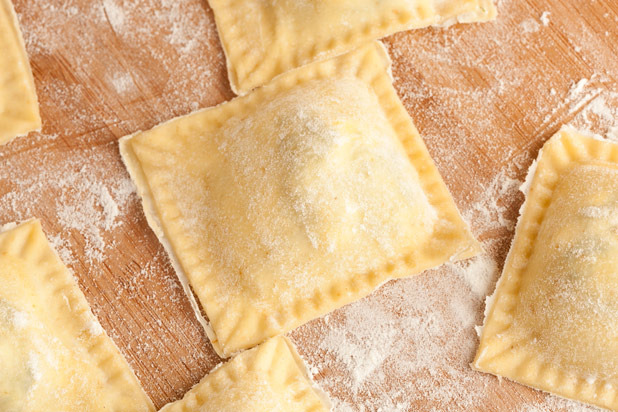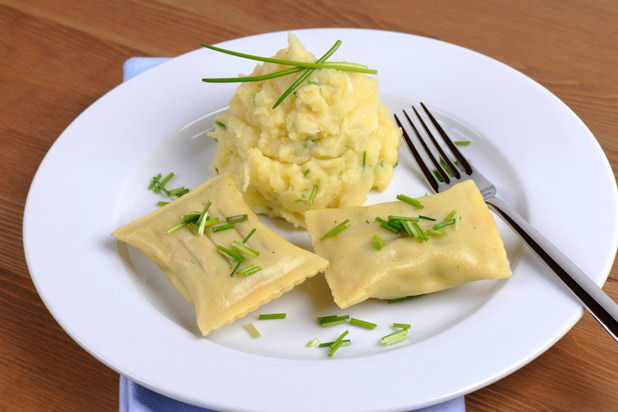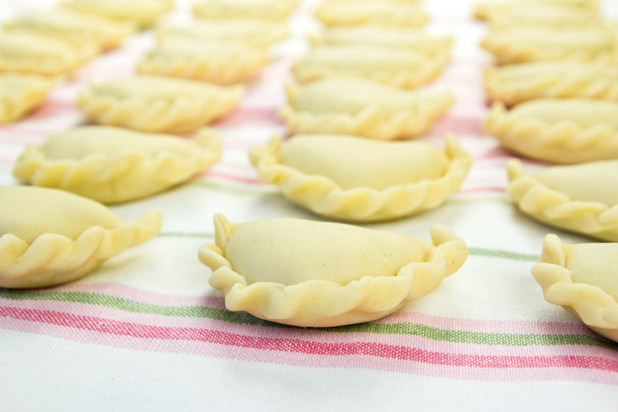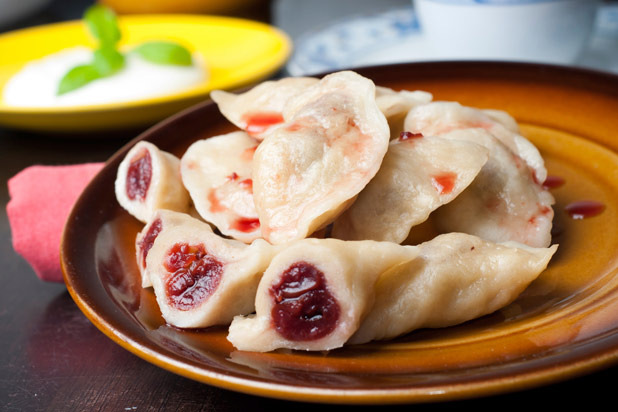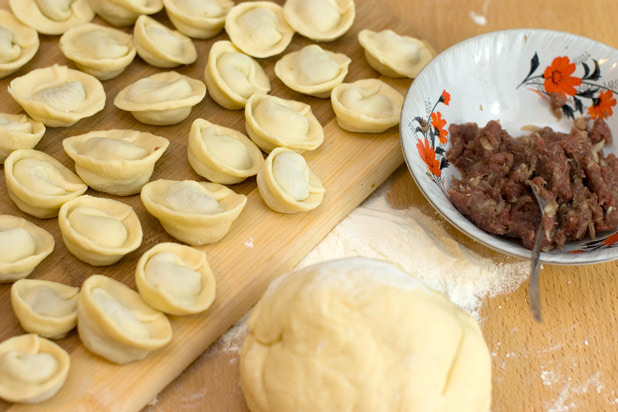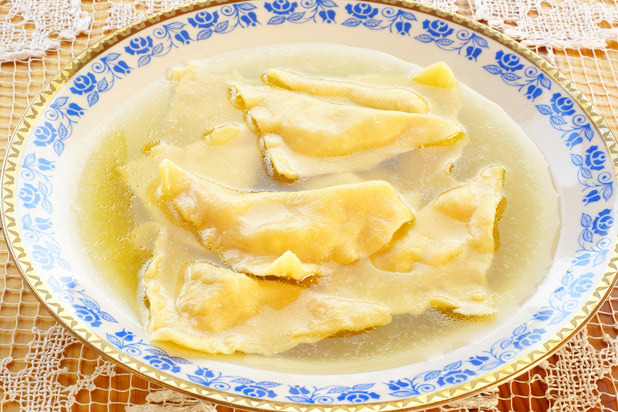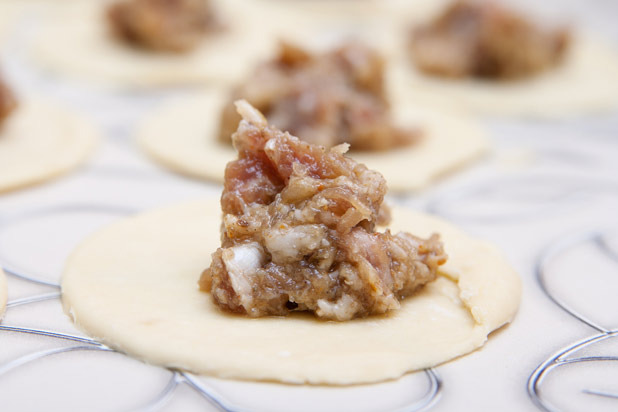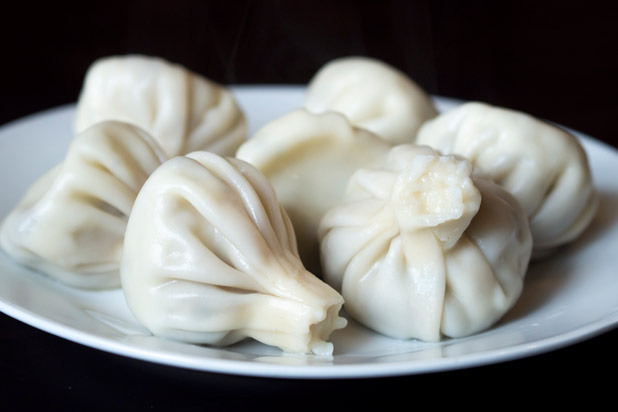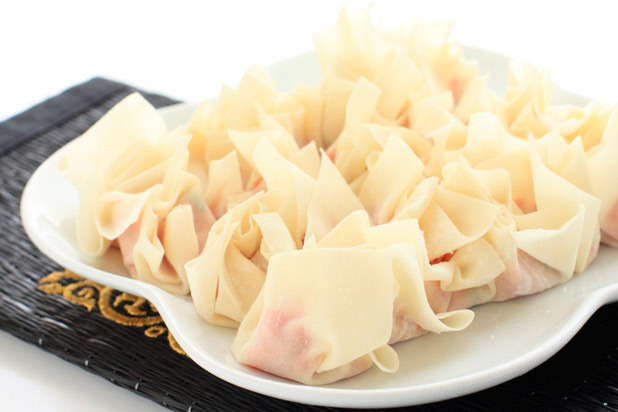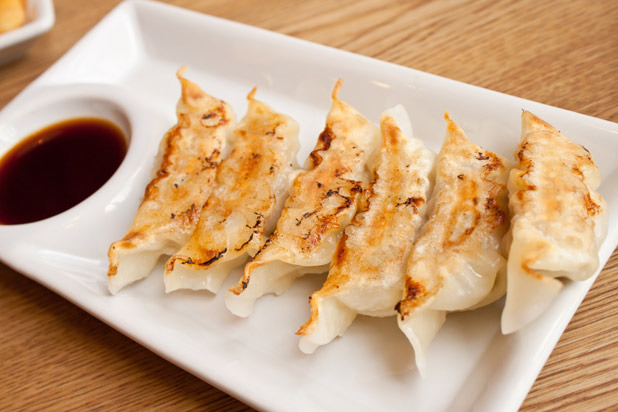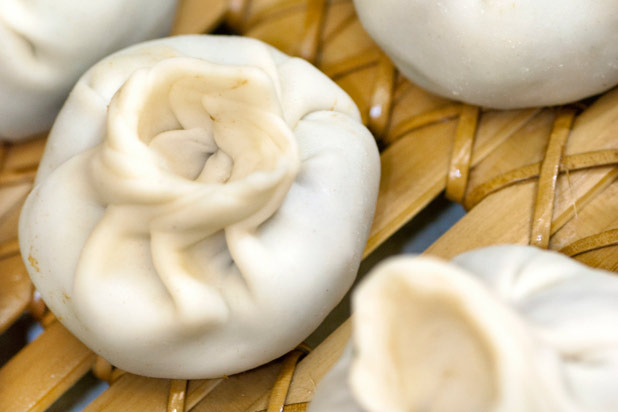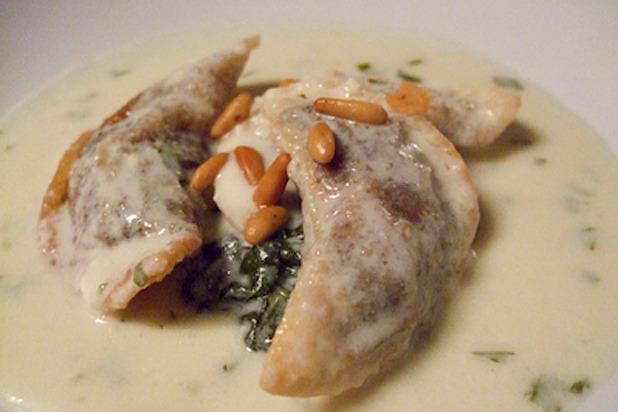Around The World In 13 Dumplings Slideshow
We'll start with perhaps the world's most famous filled dumpling: ravioli. According to The Oxford Companion to Food, the earliest references to ravioli appear in the writings of a Venetian merchant named Francesco di Marco dating to the 1300s. The earliest recipes fill dough with blanched green herbs and fresh cheese, and don't vary much from what you'll find in Italian restaurants nowadays. Today, most ravioli are produced in factories and sold frozen, but plenty of Italian artisans and home cooks alike still prepare them in the traditional way.
Germany: Maultaschen
Originating in the historical German region of Swabia (in today's Baden-Württemberg and Bavaria), this dumpling is traditionally filled with a mixture of minced meat, smoked meat, spinach, breadcrumbs, onions, herbs, and spices. They're square or rectangular, usually about 3 to 5 inches across, and legend has it that they were invented to be eaten during Lent, with the joke being that because the meat is hidden, God can't see it.
Poland: Pierogi
This dense Polish dumpling is one of the country's greatest contributions to the culinary landscape. They're also incredibly easy to make: flour and a little mashed potato is mixed with warm water, rolled into a dough, and cut out with the lip of a glass, a mixture of mashed potatoes and fried onions is added, and then they're boiled. They're also traditionally then fried and served alongside more fried onions and sour cream. But really, the filling possibilities are endless.
Ukraine: Vareniki
The name varenyk translates to "boiled dough" in Ukrainian, which gives you an idea of the versatility of this dumpling. They're fat little square or crescent-shaped boiled dumplings, traditionally filled with potato and then drenched in butter, topped with fried onions, and served with sour cream and more butter. Some are also filled with fruit. That'll get you through a cold Ukrainian winter!
Russia: Pelmeni
These little traditional Russian dumplings are generally round and 1 to 2 inches across, and are served at just about every Russian restaurant. Every family's recipe is a little different, but unlike their Ukrainian counterpart vareniki, they always have a savory filling. Traditionally, the dough is a mixture of flour, eggs, and water; the filling is a mixture of ground beef, pork, garlic, and onions; and they're twisted up to resemble tortellini.
Jewish Cuisine: Kreplach
While kreplach might not have a specific country to call home (although some claim that it originated in the Venetian ghetto at around the same time as ravioli), it's as traditionally Jewish a dish as noodle kugel, chopped liver, and matzo ball soup. These triangular dumplings are usually eaten in chicken soup, and are filled with a rich beef-based mixture. They're a bit thicker than traditional ravioli, and have the power to make any soup a filling meal.
Turkey: Manti
Turkey's traditional dumpling is usually filled with a beef or lamb and onion mixture and served doused with a garlicky yogurt sauce. They're also popular in Afghanistan, Armenia, and other former Soviet republics, and in Turkey they're often traditionally prepared by a woman for her prospective mother-in-law; the smaller the manti, the more skillful the bride is considered to be in the kitchen.
Georgia: Khinkali
These twisted knobs of dough are usually filled with spiced meat, greens, and onions. They're usually eaten plain or with a sprinkle of coarse-ground black pepper. Juices collect inside the dumpling as they cook, so the right way to eat them is to hold them by the top, take a bite out of the bottom, slurp up the broth, and then eat the rest.
China: Wonton
Probably just as frequently eaten in the United States as ravioli, wontons have many variations in their native China. They're usually filled with a spiced pork mixture, boiled, and served in broth, but sometimes they're also deep-fried. The variety that's eaten in many Chinese-American restaurants is actually relatively similar to what you'd find in China, albeit with a bit less nuance.
Japan: Gyoza
The popular Japanese gyoza tend to be longer and narrower than other filled dumplings out there, and properly crimping the edge requires a deft hand. They're usually made with very thin dough; stuffed with a mixture of pork, chive, ginger, and sesame oil; pan-fried and hit with some steam at the end; and dipped into a mixture of vinegar and soy sauce.
Korea: Mandu
The varieties of mandu available in Korea are incredibly diverse. Some are boiled, bite-size, and filled with pork and scallions (mul mandu), others are deep-fried (goon mandu), and others are steamed, filled with kimchi, and require a few bites (jjin mandu). Still others are the size of your fist and more closely resemble steamed pork buns (wong mandu). In most cases, however, you can tell when they're homemade, and they're usually delicious.
Himalayas: Momo
In Nepal and Tibet, a momo is one of the most popular snack foods you'll find (there are momo stands on nearly every street corner in Katmandu). They're traditionally steamed, but can also be found pan-fried and deep-fried. They're generally either half-moon-shaped or completely round, and because of the fact that there are plenty of vegetarians in these parts, they're traditionally stuffed with potatoes, textured soy, or cheese. Non-vegetarian ones often contain buffalo meat. They're always served alongside a tomato-based chutney, which usually contains cilantro, sesame seeds, green chiles, ginger and garlic paste, cumin seeds, and vegetable oil.
Lebanon: Shish Barak
These Lebanese dumplings might look like other cultures', but the similarities stop there. They're usually filled with a flavorful beef and pine nut mixture and simmered in goat milk yogurt seasoned with garlic, mint, and cilantro. They're traditionally made at home, and even though they're incredibly popular in Lebanon, you'd be hard-pressed to find them in restaurants there.
